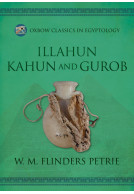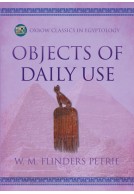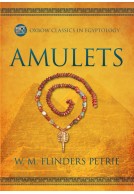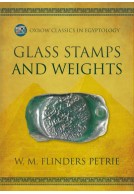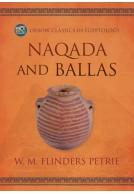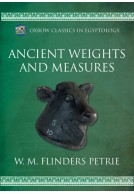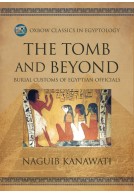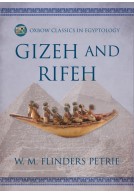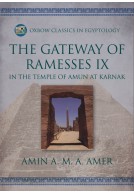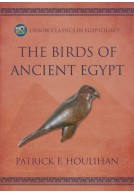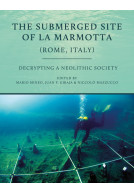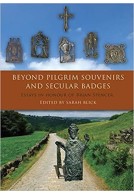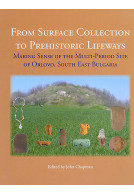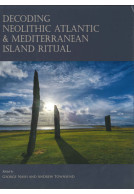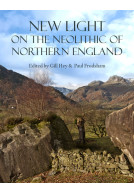Illahun, Kahun and Gurob (Paperback)
By
Sir W M Flinders Petrie
Imprint: Oxbow Books
Series: Oxbow Classics in Egyptology
Pages: 98
ISBN: 9798888570227
Published: 15th June 2023
Script Academic & Professional
Imprint: Oxbow Books
Series: Oxbow Classics in Egyptology
Pages: 98
ISBN: 9798888570227
Published: 15th June 2023
Script Academic & Professional
You'll be £24.95 closer to your next £10.00 credit when you purchase Illahun, Kahun and Gurob. What's this?
+£4.99 UK Delivery or free UK delivery if order is over £40
(click here for international delivery rates)
Order within the next 11 hours, 12 minutes to get your order processed the next working day!
Need a currency converter? Check XE.com for live rates
(click here for international delivery rates)
Order within the next 11 hours, 12 minutes to get your order processed the next working day!
Need a currency converter? Check XE.com for live rates
Flinders Petrie undertook excavation and survey of ancient Egyptian towns in the Faiyum oasis, south-west of Cairo, in 1888–90. The work included opening of a pyramid at Illahun and excavation of a nearby cemetery, excavation and planning of over 2000 chambers of the city of Kahun, excavation of a Ptolemaic cemetery at Gurob, and work at the temple site at Medinet Gurob. This facsimile volume presents brief descriptions of the work with a focus on the artifacts and inscriptions recovered and recorded with an attempt to establish a chronology of occupation in the oasis.
The entrance to the pyramid at Illahun, its peculiar structure and exploration of its various internal passages and chambers are described, including the sepulchre containing the red granite sarcophagus of Usertesen II, accompanied by a table of offerings. A series of nearby tombs produced a wealth of artifacts associated with burials, wooden coffins and cartonnages, including glazed objects, amulets, scarabs, beads, silver cowries, carved and inscribed wooden objects and statuettes. At Kahun the complete surviving plan of the ancient town revealed a regular layout thought by Petrie to be the work of a single architect. He identified the acropolis, at least eight great houses, dwelling houses, rubbish heaps, and storerooms arranged along numerous narrow ‘workmen’s’ streets with drainage channels. Much evidence for construction materials and techniques and house fittings, wall plaster and paint was recovered. Portable objects included decorated pottery, some of it imported; pottery trays of offerings; stonework; wooden carvings; flint sickles and knives; inscribed stelae; a variety of copper tools; scarabs and clay seals; stone weights and many tools, including several workshop groups. A family tomb in the cellar beneath one house contained 12 coffins, each containing several bodies with grave offerings buried in succession, two baby boxes and a heap of offerings. At Gurob, the plan of the main temple and surrounding enclosures, within which were contained most of the houses, was established and an outline of its history determined. An unusual practice of burning personal belongings in pits beneath the houses was identified and the groups of objects and inscriptions discussed. The nearby cemetery was also investigated with pit-like tombs producing undecorated coffins but finely painted cartonnages, badly decomposed papyri and a few funerary objects. A discussion of the wider urban landscape concludes the narrative. There are specialist reports on the papyri and stone implements.
This series comprises facsimile re-issues of typological catalogues produced between 1898 and 1937 by W.M. Flinders Petrie, and re-issued in facsimile by publishers Aris & Phillips in the 1970s alongside newly-commissioned titles by contemporary experts. Petrie’s catalogues remain invaluable source material today. The Oxbow Classics in Egyptology series now makes a selection of these important resources available again in print for a new generation of students and scholars.
There are no reviews for this book. Register or Login now and you can be the first to post a review!
About Sir W M Flinders Petrie
Sir William Matthew Flinders Petrie (1853–1942) was a pioneer in the field of ‘modern’ archaeology. He introduced the stratigraphical approach in his Egyptian campaigns that underpins modern excavation techniques, explored scientific approaches to analysis and developed detailed typological studies of artefact classification and recording, which allowed for the stratigraphic dating of archaeological layers. He excavated and surveyed over 30 sites in Egypt, including Giza, Luxor, Amarna and Tell Nebesheh.
More titles by Sir W M Flinders Petrie
Other titles in the series...
Other titles in Oxbow Books...







